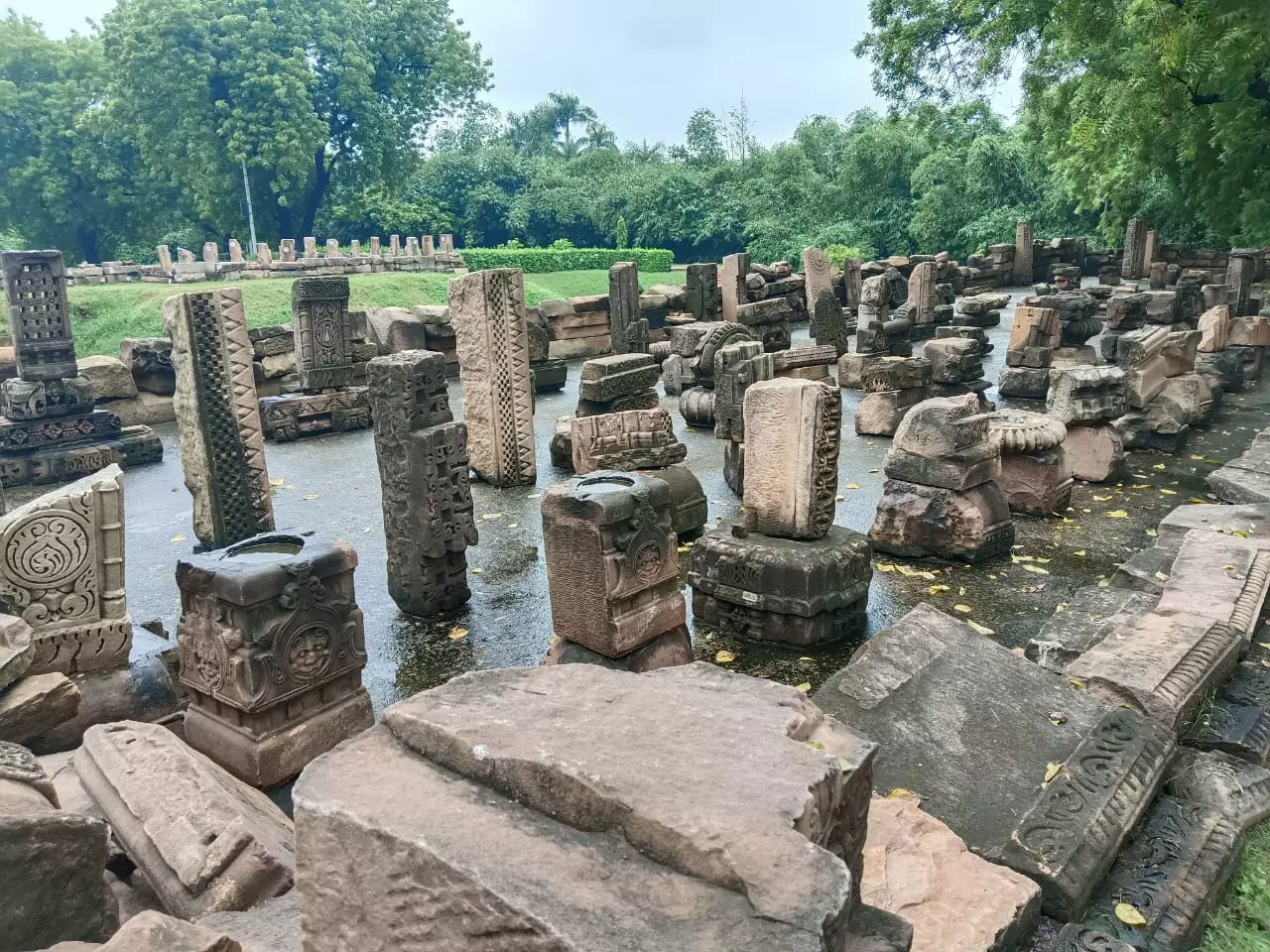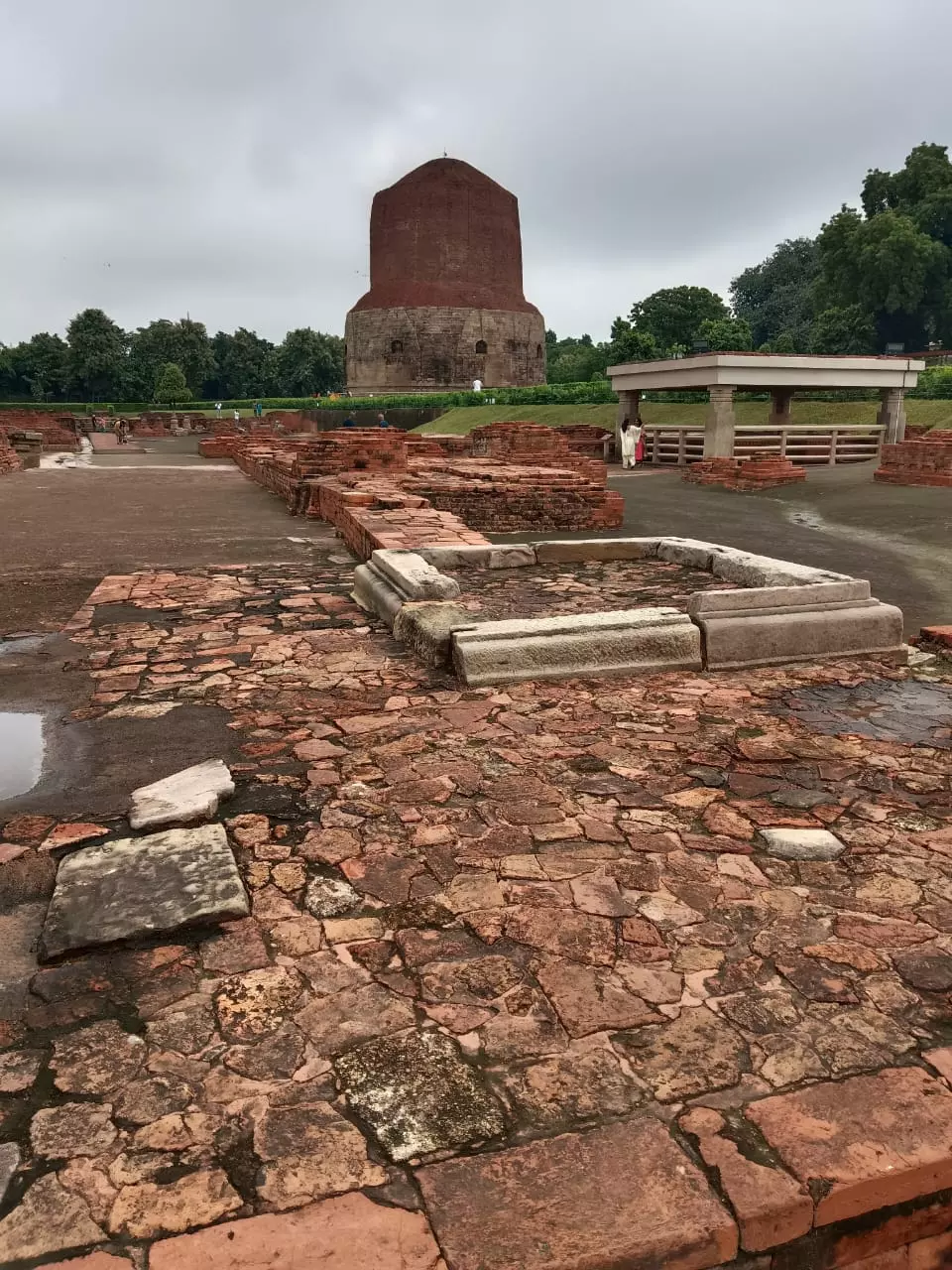
- Home
- India
- World
- Premium
- THE FEDERAL SPECIAL
- Analysis
- States
- Perspective
- Videos
- Sports
- Education
- Entertainment
- Elections
- Features
- Health
- Business
- Series
- In memoriam: Sheikh Mujibur Rahman
- Bishnoi's Men
- NEET TANGLE
- Economy Series
- Earth Day
- Kashmir’s Frozen Turbulence
- India@75
- The legend of Ramjanmabhoomi
- Liberalisation@30
- How to tame a dragon
- Celebrating biodiversity
- Farm Matters
- 50 days of solitude
- Bringing Migrants Home
- Budget 2020
- Jharkhand Votes
- The Federal Investigates
- The Federal Impact
- Vanishing Sand
- Gandhi @ 150
- Andhra Today
- Field report
- Operation Gulmarg
- Pandemic @1 Mn in India
- The Federal Year-End
- The Zero Year
- Science
- Brand studio
- Newsletter
- Elections 2024
- Events
The wanderers and witnesses of history

In Indian schools, history is not given as much importance as other subjects; however, the history textbooks do allocate considerable attention to the narratives of foreign travellers who visited India. These textbooks have played a crucial role in popularising the names of many such travellers. Megasthenes, Marco Polo, Xuanzang, Ibn Battuta, and Faxian are well-known figures in...
In Indian schools, history is not given as much importance as other subjects; however, the history textbooks do allocate considerable attention to the narratives of foreign travellers who visited India. These textbooks have played a crucial role in popularising the names of many such travellers. Megasthenes, Marco Polo, Xuanzang, Ibn Battuta, and Faxian are well-known figures in history classrooms, despite their names being pronounced differently in various regional languages throughout the country. This phenomenon has a rationale. A closer examination of India’s history reveals how the accounts of foreign travellers have influenced our comprehension of the past.
Chandragupta Maurya is the founder of the Maurya Empire, which was the first empire to span the entirety of India, established around 321 BCE and centered in Magadha, present-day Bihar. Unfortunately, there are no inscriptions that can be attributed to or associated with the reign of this powerful and esteemed king. Megasthenes, a Greek historian and explorer, witnessed the reign of Chandragupta Maurya firsthand. Scholars assert that he provided a detailed account of the fundamental aspects of the Maurya Empire in his work titled Indika, which has since been lost. Nevertheless, some of its content has been reconstructed from fragments and quotations found in the writings of later authors.

The Buddhist centres in Bodhgaya and Sarnath were once frequented by Chinese travellers.
“The army that enabled Chandragupta to establish his empire was reliant on the provision of personnel, horses, elephants, and oxen, a category that can be referred to as military livestock. Megasthenes’ description of this substantial area of governmental expenditure and the policies governing it provide crucial insights into the factors contributing to Chandragupta’s achievements, specifically the preservation of a royal monopoly over horses, elephants, and weaponry, the remuneration of soldiers during both peacetime and wartime, the demilitarisation of agricultural workers, and the detachment of soldiers from agricultural land,” said Thomas R Trautmann, an author and historian, while speaking on "Megasthenes and the Enigma of Chandragupta" at the online lecture series held as part of Indology Fest 2025, organised recently by the Tamil Heritage Trust based in Chennai.
Trautmann, who is professor emeritus of history and anthropology at the University of Michigan, said from the era of the Mauryan Empire to contemporary times, the environmental foundations of the political structure are rooted in the complementary distribution of regions suitable for horses and elephants, extending from the arid west to the moist east along a line bisecting the subcontinent; specifically, the valleys of the Indus and the Ganga.

The map of Chinese traveller Xuanzang's travels across India.
“Historically, the dominant power in India has consistently established its capital in elephant territory, particularly in the Ganga valley, in cities ranging from Pataliputra (Patna) to Kanauj to Delhi, strategically positioned to oversee the eastward movement of horses and the westward movement of elephants to other regions. Megasthenes’ account elucidated numerous important details regarding the kingdom,” he added. Trautmann has studied in detail subjects such as the history of ancient India, the history of anthropology, kinship systems of India, and the environmental history of India.
Information about Buddhism was limited and ambiguous at best in the Western world until the early 19th century. The initial Orientalists who examined Indian sources had to depend on Hindu writings composed in Sanskrit, which depicted the Buddha as an avatara of the Hindu god Viṣhṇu, according to Max Deeg from Cardiff University in the UK. “The circumstances shifted with the unearthing of the Pali texts from Sri Lanka, thanks to scholars such as George Turnour, and the interpretation of the Asokan inscriptions by James Prinsep, which revealed the historical aspect of the religion. The ultimate validation of the Buddha’s historicity and the religion he established was derived from the accounts of Chinese Buddhist travellers (Faxian, Xuanzang, Yijing) who had journeyed to the principal sacred sites of Buddhism in India and gathered additional information regarding the religion’s history,” said Max Deeg during his talk on “The Chinese Monk who unlocked Buddhist India: Xuanzang and his Travels.”
It is widely accepted that Buddhism was brought to China during the first century CE. By the fifth century, it had become an integral part of Chinese cultural and religious discourse. Deeg said in addition to the translations of Indian (or Central Asian) Buddhist texts, indigenous Chinese writings, including commentaries and scripture catalogues, were also being created. “The Chinese traveller and translator Xuanzang’s ‘Record of the Western Regions of the Great Tang,’ along with the earlier Chinese Buddhist travelogue by Faxian, has not only contributed to the reconstruction of Indian Buddhism as a historical religion but has also facilitated the discovery of Buddhist archaeological sites on the subcontinent,” he said.
Ibn Battuta, a Moroccan scholar and explorer, travelled to India in the 14th century, reaching Delhi in 1333 during the reign of Muhammad bin Tughluq. He stayed in India for around eight years, serving in roles such as a judge in the royal court and being assigned the responsibility of overseeing the Qutb al-Din Mubarak mausoleum. “His comprehensive narratives in his work, Rihla, offer significant insights into the social, cultural, and political environment of India during the Tughlaq dynasty,” said Akshay Chavan, an anthropologist, during his talk on "Ibn Battuta’s Mirror to Medieval India".

Marco Polo, the renowned Venetian merchant and adventurer, is regarded as one of the legendary travellers of the medieval era, according to Namit Arora, a public historian and author of several works, including Indians: A Brief History of a Civilization. “He (Marco Polo) is most famous for his remarkable expedition to the Mongol court of Kublai Khan, during which he spent over 20 years in Asia. In 1292 CE, while returning from China, he made a stop in India — landing near what is now Thanjavur in Tamil Nadu, then under the rule of the Pandya dynasty — and spent several months exploring the southern and western coasts before leaving from Gujarat.
Seventeenth-century French society exhibited a profound fascination with India. References to India in French literature indicate a rich interaction between these two cultures during a period when both created remarkable achievements — Versailles and the Taj Mahal. François Bernier arrived in India as a physician to Prince Dara Shukoh and subsequently to Emperor Aurangzeb. He meticulously recorded his observations of the Mughal Empire, which were later published in his work, Travels in the Mughal Empire. In her discussion titled “Encounters with India a la Francaise: Francoise Bernier and Jean-Baptiste Tavernier,” Faith Beasley noted that examining Bernier’s writings within the original context of France’s “Great Century,” and in dialogue with other French explorers like Jean-Baptiste Tavernier, highlights how various societies interact with new worlds in unique manners, thereby crafting their own distinctive narratives. Beasley is professor of French Cultural Studies at Dartmouth, USA.
Afanasy Nikitin was a Russian merchant and adventurer hailing from Tver, recognised as the first Russian and one of the earliest Europeans to journey to and chronicle his experiences in India through a narrative titled A Journey Beyond the Three Seas. Nikitin embarked for India from Hormuz in 1497, and upon his arrival at the port of Chaul, he took note of the markets, lifestyles, and courts of the Bahmani Sultanate and the Vijayanagara Empire. He resided in India for nearly three years before making his way back to Russia. Carsten Niebuhr, a German mathematician, cartographer, scholar, and explorer, was the only survivor of a Danish expedition to the Middle East and India, as noted by Kurush F Dalal, the former director of the School of Archaeology at INSTUCEN Trust in Mumbai. He spent 14 months in India, mainly in Bombay and Surat, and is renowned for his comprehensive accounts of these regions, providing valuable insights into their economic and social dynamics, along with his precise maps and other illustrations.
Lady Henrietta Clive was a spirited and independent spouse of Edward Clive, who served as the Governor of Madras from 1798 to 1803. Following the demise of Tipu Sultan in 1799, she expressed a desire to visit the capital city of the Mysore Sultanate. “In March 1800, she travelled from Fort St George to Srirangapatna, accompanied by her two young daughters, their Italian governess, and a large entourage. This journey was remarkable, filled with accounts of the regional turmoil and chaos that ensued after Tipu Sultan’s death,” said Jennifer Howes, an art historian based in the UK.
Who are Domingo Paes and Fernao Nuniz? They were two horse traders from Portugal who provided a captivating narrative of the Vijayanagara Empire. “The grandeur of the Vijayanagara Empire attracted visitors from numerous nations. The most striking accounts originate from the two Portuguese horse traders, Domingo Paes and Fernao Nuniz. Paes arrived in Vijayanagara during the reign of Emperor Krishnadeva Raya, while Nuniz came during the rule of his successor, Achyuta Raya. Both individuals offer detailed descriptions of the Empire’s vast wealth, the magnificence of the capital city, its roads, gates, walls, marketplaces, temples, palaces, festivals, and much more,” said Chithra Madhavan, a Chennai-based historian and author, during her talk on “Domingo Paes and Fernao Nuniz: Portuguese Travellers to Vijayanagara.” The recently concluded IndoFest featured a six-day online lecture series themed “Wanderers and Witnesses: Travellers' Tales of India”. This series included two lectures every day, with contributions from 12 authors and scholars.
